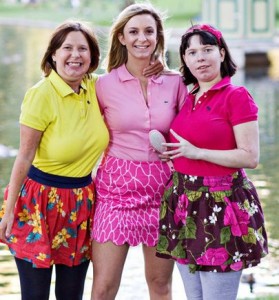Most of us know what an app is. For those who don’t: “app” is short for application software, which helps a device user perform specific tasks. Most smartphones, handheld devices, and computers have apps that allow us to play games, catch up on the news, and connect us to social media.
Recently Hewlett-Packard (HP) hosted a “hackathon” for autism at their campus in Cupertino, California. What is a hackathon? I asked myself the same question.
At the hackathon about 100 HP tech members and autism advocates came together to work towards developing touch screen apps for children with autism. Working with children who have autism, the team members began to develop apps that would help overcome the challenges individuals on the spectrum face daily. Some of the new apps include speech and verbal learning, communication assistants, and, of course, games. These new apps — soon to be released on the web for free! — encourage children to develop communication skills, learn according to their interests, and develop social relations with other children by sharing a common interest in technology.
Communication and social skills have the opportunity to improve drastically with these new apps. In a case study about a child with ASD, researchers used FM audio trainers and video inputs to see if social skills and communication skills improved with these devices. After weeks of treatment, the case study showed that the individual had a substantial increase to attention of visual and auditory cues.
With the assistance of the external devices, the child had an increase in communication. [1] Similarly these new apps for smart phones are designed to use visual and auditory cues to assist children in developing communication and behavioral skills.

A study on the new technology of smart phones addresses the old system of communicating, PECS, and compares it to the updated communication systems that are on apps. PECS used laminated cards to teach and improve communication and social skills. PECS is very successful but does have some limitations. Using the laminated cards for PECS can be an overwhelming, paper dependent process. With new technology that allows the cards do be digitized on a touch screen, children, teachers, and parents can have an easier time using the PECS system. The Pix Talk system, similar to the apps created at the hackathon, is designed to use visual and verbal cues to enhance communication and behavioral skills. The Pix talk system creates a personalized and more involved way for children to communicate their needs. Motivation for ASD children to use these new programs also increases with the use of a computer, smart phone, or a touch screen device. Technology is becoming more and more important in providing easy, fun ways for children with ASD to communicate and socialize. [2]
Most children these days know how to play on iPad and use a touch screen. The innovations of the hackathon will drawl on the easy use of a touch screen for ASD children and allow them to download apps that are not only educational and beneficial, but also fun. To check out more of the apps that are to be offered and to suggest any idea you think would make a good app head to http://www.hackingautism.org/hackathon
Starting at a young age, technology is engrained in your life. The advent of the touch screen and these new apps will allow ASD children to learn life skills that will help improve their everyday living. Everything from social relationships, communication, independence, and visual and auditory learning has the opportunity to improve with these new apps.
One touching story of how these apps can change a child’s life is the story of Jordan, a 10-year-old boy with autism. As a boy who could not communicate verbally, technology changed his life. His heartwarming poem, “Silent No More,” describes his journey from a non-communicative boy to someone who has endless possibilities in the realm of communication technology.
To read his poem — which I highly recommend — and other stories of success with technology head to http://www.hackingautism.org/stories-of-hope. In the words of HP executive, Phil McKinney, “Today is about making technology that gives people a voice, and the ability to participate”.
What apps do you love? Share in a comment and start the conversation here!
– Taylor Platt
______________________________
To read more about the “hackathon”: http://www.mercurynews.com/business/ci_19098013
We’ll be adding links to the apps we believe are helpful to our marketplace attheautismresearchfoundation.org/marketplace.php .
Until then head over to http://www.autismepicenter.com/autism-blog/blog5.php to read some more information about the iPad and the new apps that are coming out.
Another great website to check out ishttp://www.asha.org/public/speech/development/communicationdevelopment.htm. This website provides great detailed information about the communication development for children in kindergarten through fifth grade. It also gives suggestions to parents and caregivers about how to improve communication skills.
________________________________________
De Leo G, Gonzales CH, Battagiri P, Leroy G. A smart-phone application and a companion website for the improvement of the communication skills of children with autism: clinical rationale, technical development and preliminary results. J Med Syst 2011 Aug;35(4):703-711.[cited 2011 Oct 21 ]
Baharav E, Darling R. Case report: Using an auditory trainer with caregiver video modeling to enhance communication and socialization behaviors in autism. J Autism Dev Disord 2008 Apr;38(4):771-775.[cited 2011 Oct 21 ]




 She has not asked for him since, but found a Batman mask given to her by the boys on our trip home. Lilly had regressed on that trip — humming constantly, little to no language, wandering — and the only thing that seemed to calm her was the mask. It acted as a comfort, an escape: heartbreaking and adorable wrapped in the same breath.
She has not asked for him since, but found a Batman mask given to her by the boys on our trip home. Lilly had regressed on that trip — humming constantly, little to no language, wandering — and the only thing that seemed to calm her was the mask. It acted as a comfort, an escape: heartbreaking and adorable wrapped in the same breath.

 As an older sister to two incredible, beautiful, amazing girls with autism, I am extremely grateful for the amount of support from donors that help keep The Autism Research Foundation running. Since I was able to speak and to think on my own, I’ve known that my most important role in life would be to be my sisters’ voice.
As an older sister to two incredible, beautiful, amazing girls with autism, I am extremely grateful for the amount of support from donors that help keep The Autism Research Foundation running. Since I was able to speak and to think on my own, I’ve known that my most important role in life would be to be my sisters’ voice.

 Now, in our 4th holiday season, we have a game plan that suits our family’s needs. Just like the beautiful snowflakes that fall — unique in their nature and appearance — so are our angels with autism. Listening to her needs, verbal or not, makes for a better holiday season.
Now, in our 4th holiday season, we have a game plan that suits our family’s needs. Just like the beautiful snowflakes that fall — unique in their nature and appearance — so are our angels with autism. Listening to her needs, verbal or not, makes for a better holiday season.




